For almost as long as mobile phones have been around, mobile gaming has been popular.
We’ve come a long way from the early days of Snake and Tetris, but sinking a few minutes (or hours) into a game on your phone is still a popular way to pass the time.
But for some demanding titles, a budget or mid-range phone simply isn’t up to the task. You might need something a little more powerful, but even some flagship phones won’t be suitable.
That’s where this article comes in. Each of the 10 phones below deliver a great mobile gaming experience, but they’re not all dedicated gaming handsets.
While you will find Asus ROG, Redmagic and Black Shark devices here, Samsung, Apple, Motorola and Poco all make phones that have made the grade. We’ve also tried to appeal to a range of different budgets.
At the bottom of the page, you’ll also find detailed buying advice on what to look for in a gaming phone. But if you just want a list of the devices we recommend buying, look no further.
Best gaming phone 2024
1. Asus ROG Phone 8 Pro – Best gaming phone overall
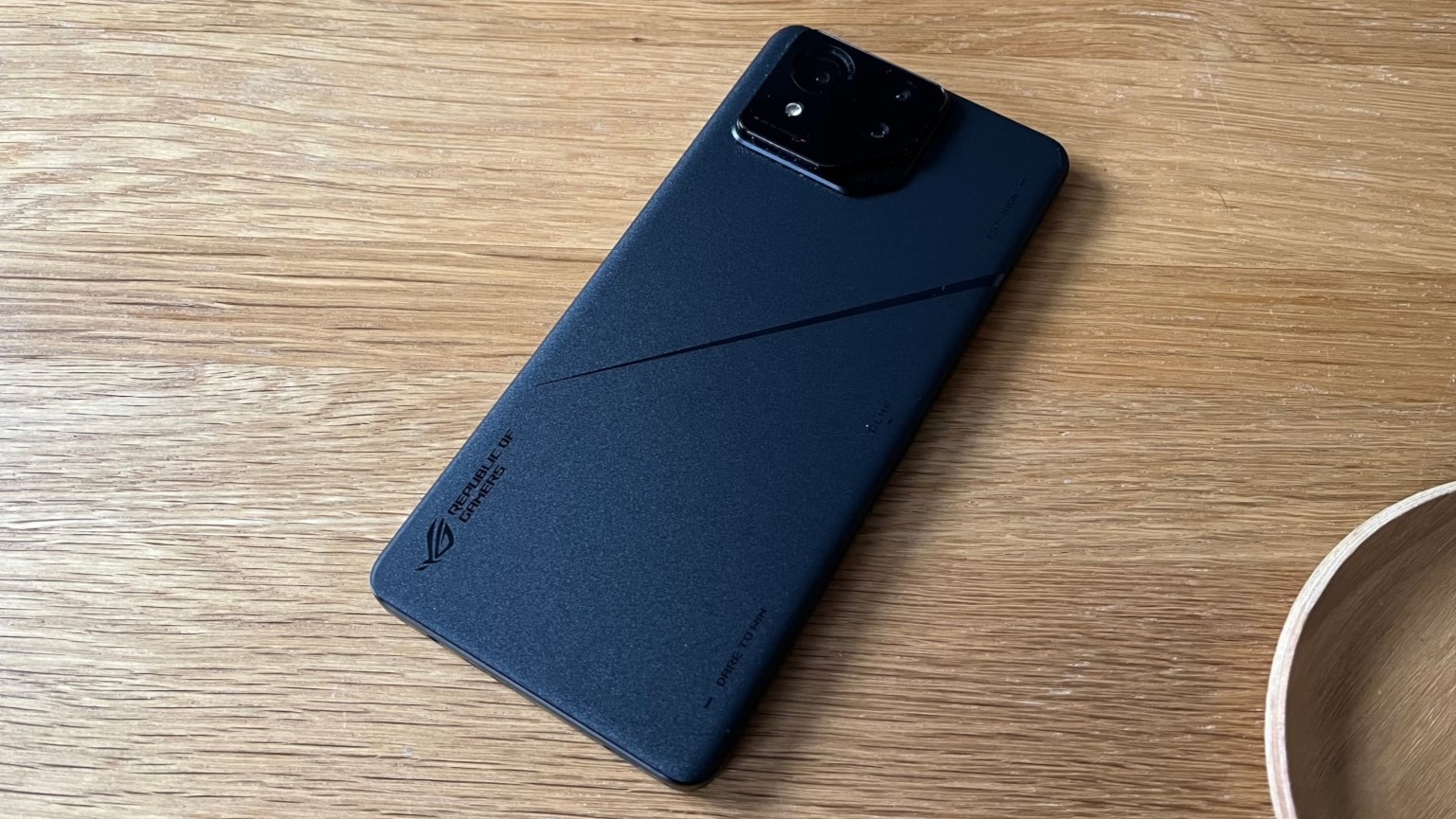
Pros
- Incredible performance
- New lightweight design
- Stunning 165Hz OLED screen
- Very usable cameras
Cons
- Expensive
- No improvement to battery life
- Only two OS version updates
The ROG Phone 8 Pro is the best gaming phone you can buy, though it looks a lot more like regular handsets than its predecessors.
Gone is the colourful, eye-catching aesthetic of the 2023’s ROG Phone 7 Ultimate, and replaced with a much more muted design. Not all mobile gamers will be a fan, but it does give the ROG Phone mainstream appeal for the first time. And don’t worry, you still get some customisable LED lights on the back.
Stellar performance is something that everyone will appreciate, and the combination of Qualcomm’s Snapdragon 8 Gen 3 and at least 16GB delivers incredible results. Alongside a class-leading 165Hz screen refresh rate and 720Hz touch sampling, this is one of the fastest and most responsive phones you can buy.
Even the cameras, something often overlooked on gaming phones are above average and very usable. It’s a shame to see the battery capacity reduced (battery life is still solid) and only two Android version updates (four years of security), though.
But that price tag will be the main sticking point for most people. With no obvious contract options, can you justify spending at least £1,099/$1,199.99? Given how easily this could be a regular smartphone now, your answer might be yes.
2. Red Magic 8S Pro – Best value gaming phone
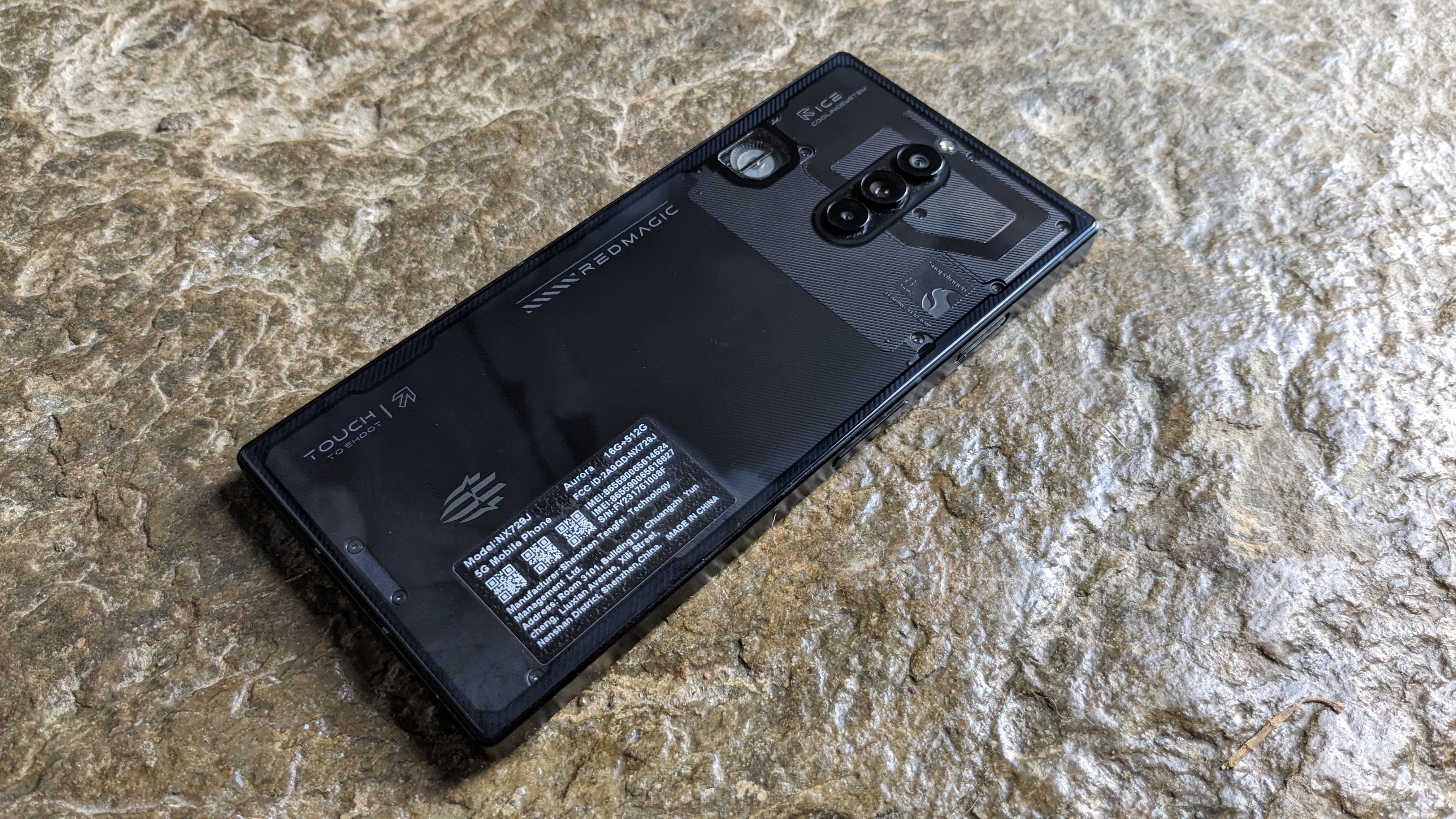
Pros
- Superb performance
- Impressive sound quality
- Decent cameras
- Great value
Cons
- Heavy and bulky
- Some software bugs
- Missing some premium features
The Redmagic 8S Pro costs just over half the price the ROG Phone 8 Pro, yet still offers everything most people are looking for in a gaming phone.
Its eye-catching rear design is something we’ve come to associated with dedicated handsets, combining a unique aesthetic with customisable RGB lights.
The phone itself is powered by the Snapdragon 8 Gen 2, which isn’t Qualcomm’s latest and greatest chipset anymore, but still delivers top-tier performance. With at least 12GB of RAM, it can handle even the most demanding games on the Google Play Store with ease.
Its 6.8-inch AMOLED display is another highlight, combining a 120Hz refresh rate with 960Hz touch sampling for silky-smooth gaming. Alongside impressive stereo speakers, a feature often overlooked on modern phones, you won’t be complaining about the audiovisual experience.
Even the cameras are decent, making the Redmagic 8S Pro superb value for money. It’s bulky, there are some software bugs and no water resistance or wireless charging, but these can easily be overlooked.
3. Motorola Edge 40 Pro – Best regular phone for gaming
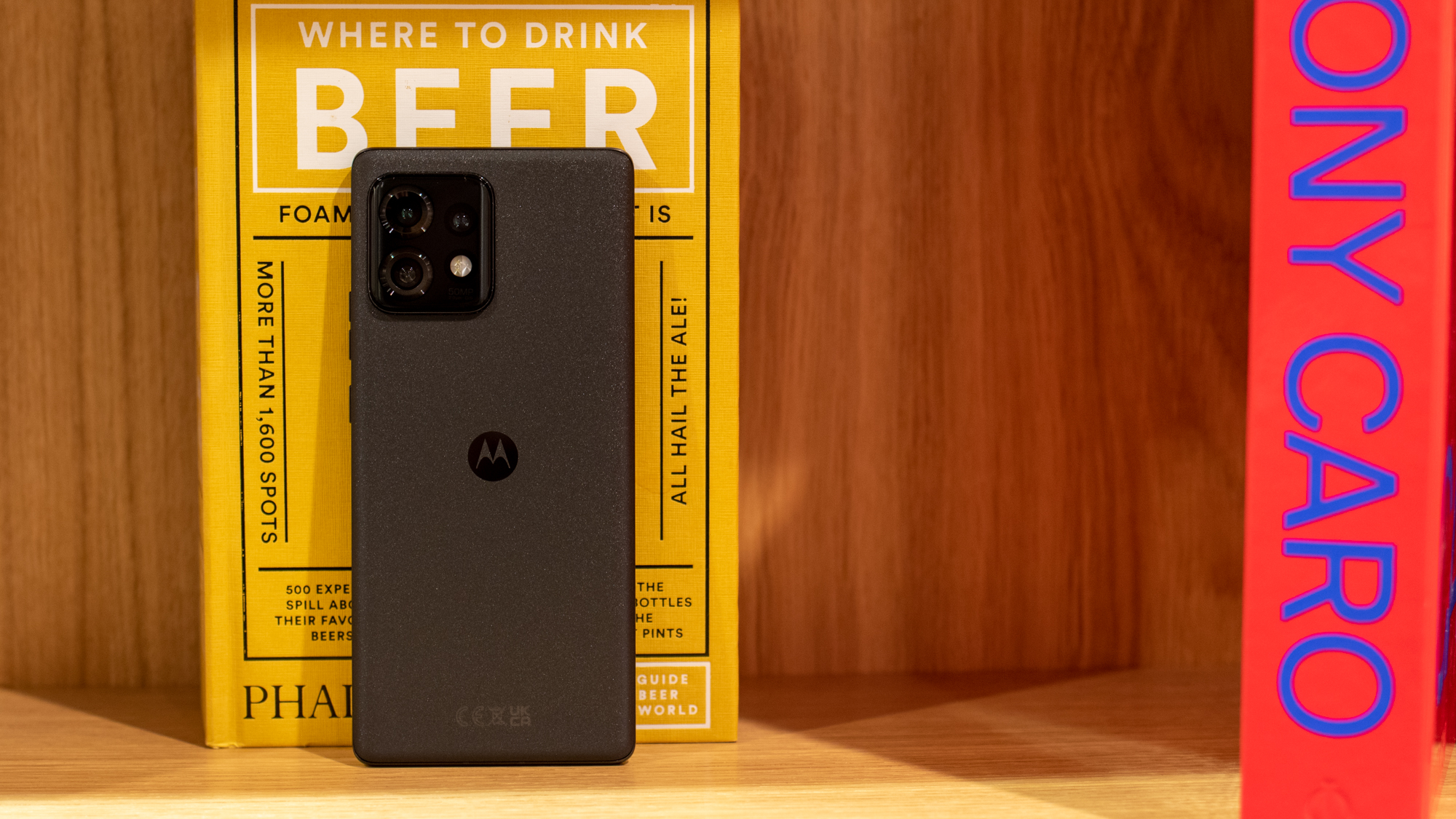
Pros
- 165Hz OLED display
- Fantastic performance
- IP68 rating
- Phenomenal battery life
Cons
- No gaming-specific hardware
- Not the best cameras
Though the Motorola Edge 40 Pro doesn’t look like much of a gaming phone, the flagship has a surprise or two up its sleeves.
It’s powered by Qualcomm’s Snapdragon 8 Gen 2 with 12GB of LPDDR5 RAM and up to 512GB of storage, making it an impressive device able to take on dedicated gaming phones. There’s also the 6.7-inch AMOLED display to consider, with a gaming-grade 165Hz refresh rate – pretty much the only non-gaming phone to go that fast.
Gaming prowess aside, it also boasts absurdly fast 125W charging that’ll get you a full charge in well under 30 mins, and a triple rear camera that’s better than any you’ll find on a gaming phone. Oh, and did we mention that the battery lasts for two full days of typical use?
So, while you might not get built-in triggers or cool gaming-focused software enhancements, you’ll certainly get all the benefits of a flagship smartphone, plus the power you need to play.
4. Poco X6 Pro – Best cheap phone for gaming
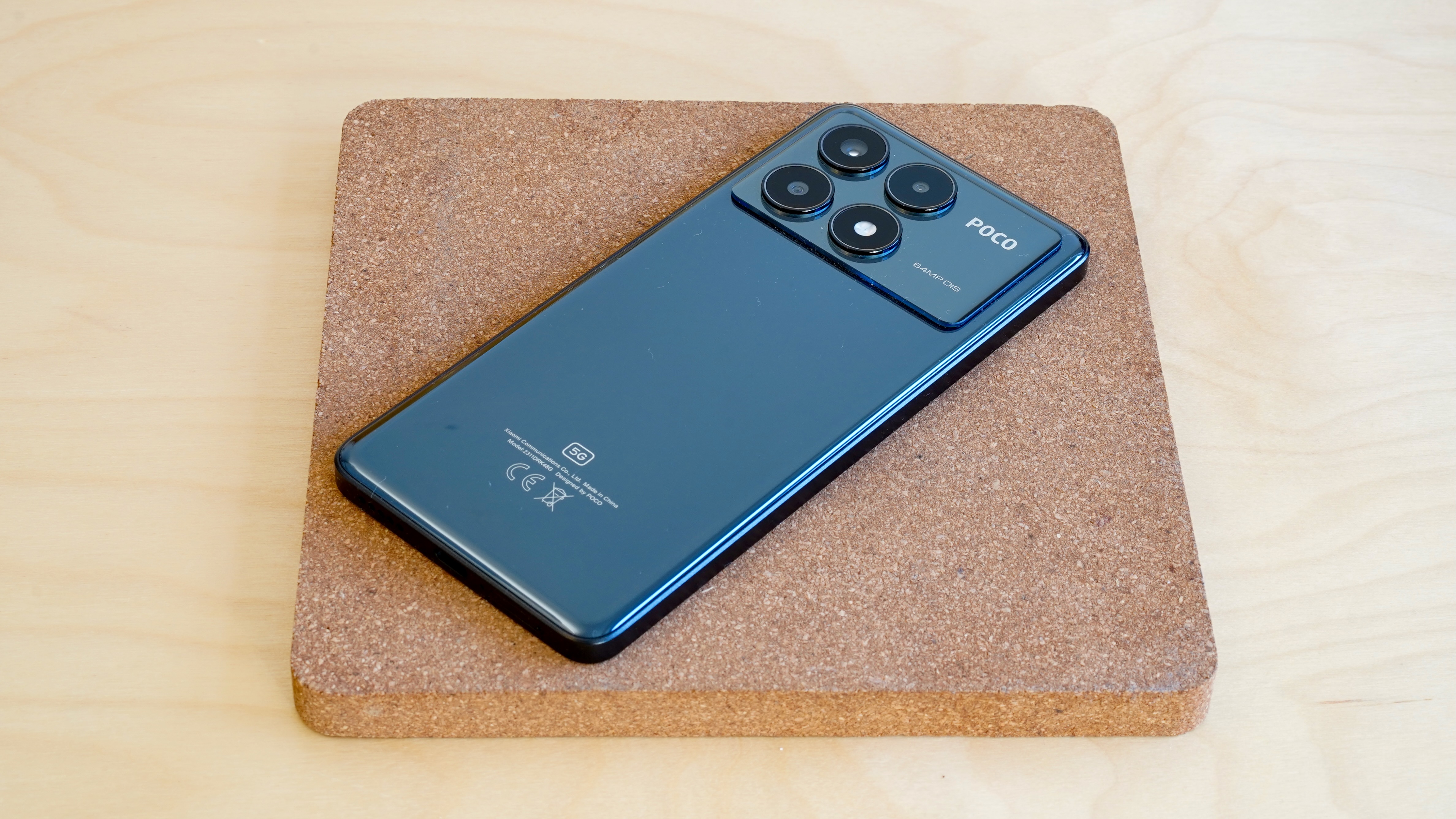
Pros
- Impressive performance
- High-end 120Hz OLED display
- Premium design
- 67W charging with charger included
Cons
- Hit-and-miss cameras
- Polarising Xiaomi software
The Poco X6 Pro costs just £369 in the UK, making it truly excellent value for money. If you want to take your first steps into the world of mobile gaming, this is a great place to start.
While performance can’t quite rival the phones above, it’s still a key strength of the X6 Pro. MediaTek’s Dimensity 8300 Ultra combines with 8- or 12GB of RAM for impressive gaming performance, running the likes of Genshin Impact on the highest graphical settings without issue.
The 120Hz OLED display is also a joy to use, while subtle design improvements make it feel just that bit more like a premium phone. Battery life is solid, but fast 67W charging (with adaptor in the box) means you won’t have to stay connected for too long.
Inevitable compromises come in the form of inconsistent cameras and Xiaomi’s new HyperOS Android skin, which still bears many resembles to MIUI, its polarising predecessor.
But at this price, you won’t find another phone that’s better suited to gaming. If you’d like to save a bit of money, the cheaper regular Poco X6 is also worth considering.
5. Asus ROG Phone 7 Ultimate – Best gamer aesthetic
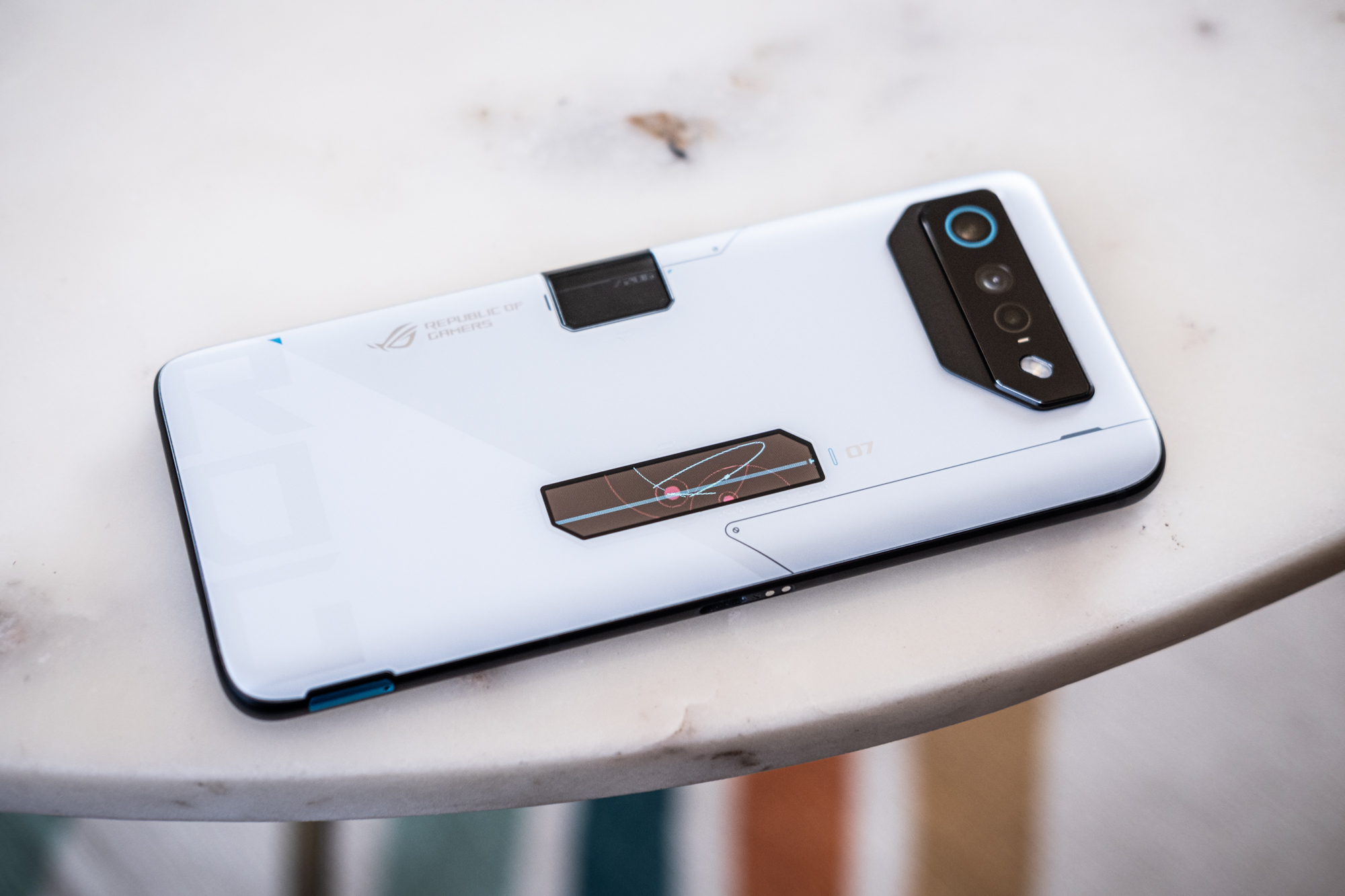
Pros
- Great performance
- Excellent battery life
- Stunning display
- Impressive cooling system
Cons
- Expensive
- Big and bulky
- Unusual design
If you’re frustrated by Asus’ decision to move away from the classic gamer aesthetic on the ROG Phone 8 Pro, the earlier 7 Ultimate is the phone for you.
It was only released in 2023, so remains a great choice in 2024. The Snapdragon 8 Gen 2 chipset combines with 16GB of RAM for superb performance. A 6.78-inch AMOLED display packs a market-leading 165Hz refresh rate, while built-in vapour cooling is supplemented by an optional clip-on cooler with its own built-in sub-woofer to amplify audio too.
What makes the Ultimate stand out from the crowd is a small ‘ROG Vision’ display on the back for notifications and custom animations, plus the ‘AeroActive Portal’ cooling flap, which activates to improve airflow even further when the cooler is clipped on.
If you can find the ROG Phone 7 Ultimate with a discount and are a fan of the design, it’s definitely worth considering.
6. iPhone 15 Pro Max – Best iPhone for gaming
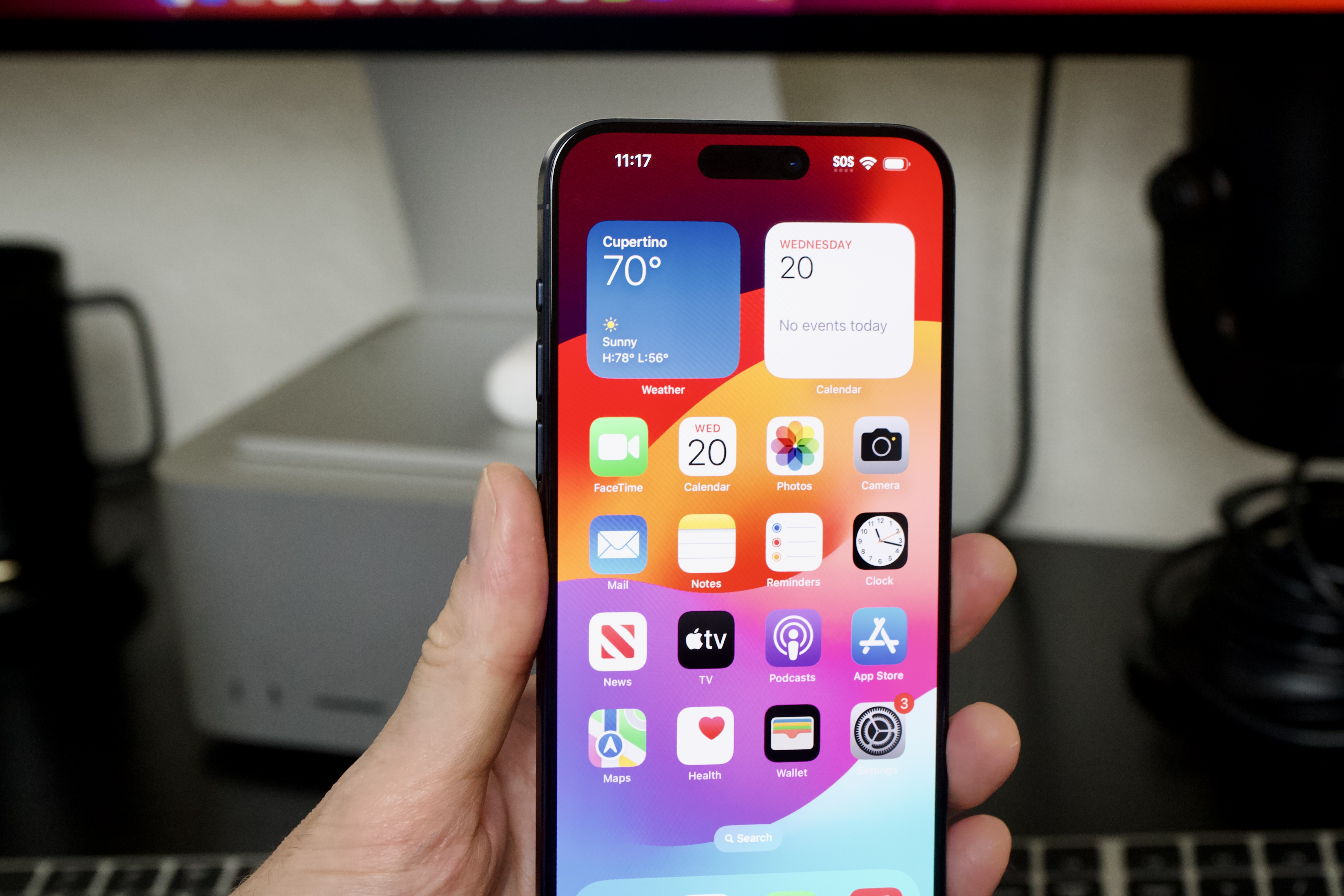
Pros
- Lightweight titanium build
- Stellar performance
- Gorgeous 120Hz display
- Action button and USB-C
Cons
- No battery life improvements
- Big and bulky
- Very expensive
The 15 Pro Max is the best iPhone you can buy, and it’s also a potent device for gaming.
That A17 Pro chipset offers incredible performance, even though few apps can fully take advantage of it. Alongside the large 6.7-inch, 120Hz display and powerful speakers, it delivers an immersive gaming experience.
A move to USB-C makes the 15 Pro Max more versatile than its predecessors, while the customisable Action Button is a nice touch. And as usual, the cameras are some of the best you’ll find on any smartphone.
Battery life is strong, albeit not improved compared to the 14 Pro Max. But the combination of the bulky design and high price tag may put some people off.
If either of those are an issue for you, consider the smaller and cheaper iPhone 15 Pro instead.
7. Samsung Galaxy S23+ – Best Samsung phone for gaming

Pros
- Bright, sharp, flat screen
- Great battery life
- Five years of software support
- Snapdragon 8 Gen 2 power
Cons
- Expensive
- 45W charging a little slow
- Software takes some tweaking
The Samsung Galaxy S23+ a great choice for gaming, especially since it and the other S23 models in fact use a very slightly overclocked version of the 8 Gen 2 chip that gives it a slight boost in single-core performance compared to rivals.
That makes this one of the fastest Android phones around, and as a top-tier flagship it also benefits from a great display, long-term software support, and fantastic cameras.
You might also like the regular S23, but the bigger display of the Plus model is more naturally suited to gaming. The S23 Ultra is bigger still, but much more expensive – and you’re mostly paying for enhanced camera features and S Pen stylus support, making the Plus the sweet spot for most gamers.
The main downside is the sluggish wired charging, which just means that if you burn through the battery in a long play session, it’ll take a little longer to top it back up.
However, you may now prefer to go for one of the newer Galaxy S24 phones.
8. OnePlus Open – Best foldable for gaming
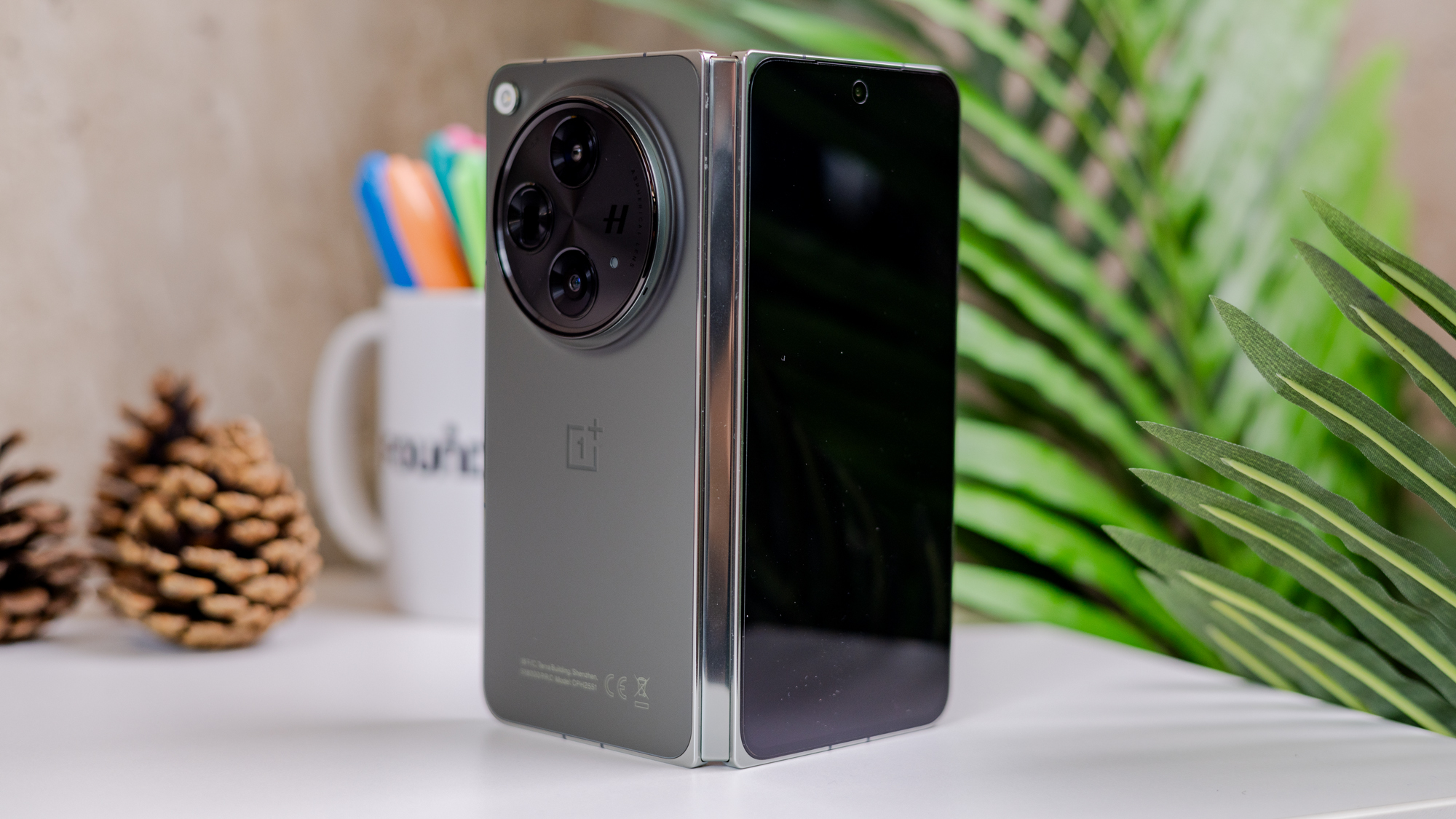
Pros
- Impressive displays
- Strong performance
- Premium, durable design
- Good rear cameras
Cons
- Battery life could be better
- Few apps optimised for big screen
- Only splash resistant
The OnePlus Open is the best book-style foldable you can buy. And while few games are optimised, the option to play on that larger 7.82-inch internal display makes it a great choice for gaming.
Even the 6.31-inch cover screen can hold its own, especially with both panels being 120Hz and OLED. Qualcomm’s Snapdragon 8 Gen 2 delivers very good performance, while a durable hinge still leaves a barely noticeable crease.
With cameras among the best you’ll find on any foldable and thoughtful Android software tweaks, there’s a lot to like here.
It’s just a shame about the battery, which struggles to make it through a full day sometimes. Alongside that high price tag, it means most gamers will be better off elsewhere.
9. Red Magic 8 Pro – Still a great choice
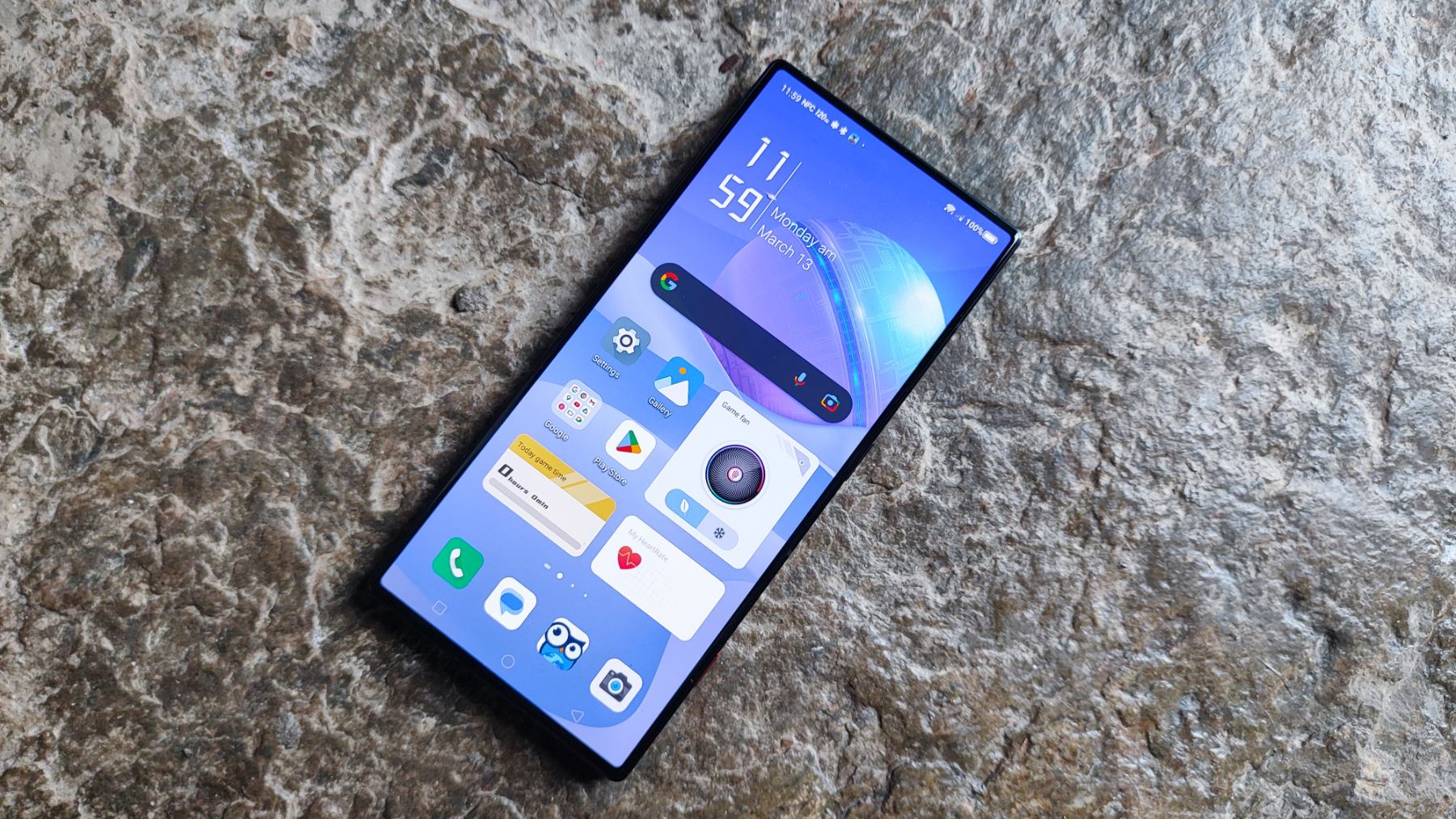
Pros
- Great performance
- Impressive battery life
- Decent cameras
- Built-in fan
Cons
- No waterproofing
- No wireless charging
- Rubbish selfie camera
The Red Magic 8 Pro isn’t Nubia’s latest and greatest anymore, but it remains an excellent affordable option for mobile gaming.
Its Snapdragon 8 Gen 2 remains one of the most powerful processors you’ll find on any phone. It combines with 12GB of RAM and 256GB storage, all for a price far below recent Asus ROG Phones.
There are small compromises here, such as the lack of flagship niceties like waterproofing or wireless charging. The use of an under-display selfie camera helps keep the 8 Pro compact and gives you a gorgeous full-screen experience, but again there’s a trade-off: your actual selfies won’t be all that great, with a soft, over-processed look to them.
The screen refresh rate is also capped at 120Hz, which is great, but below some other gaming options. The flip side of that is a touch input rate of 960Hz – i.e. it can detect touches 960 times a second, the fastest of any phone out there.
This may lack the flash and polish of the Asus options, but for this price it’s hard to argue.
10. Black Shark 5 Pro – Still worth considering
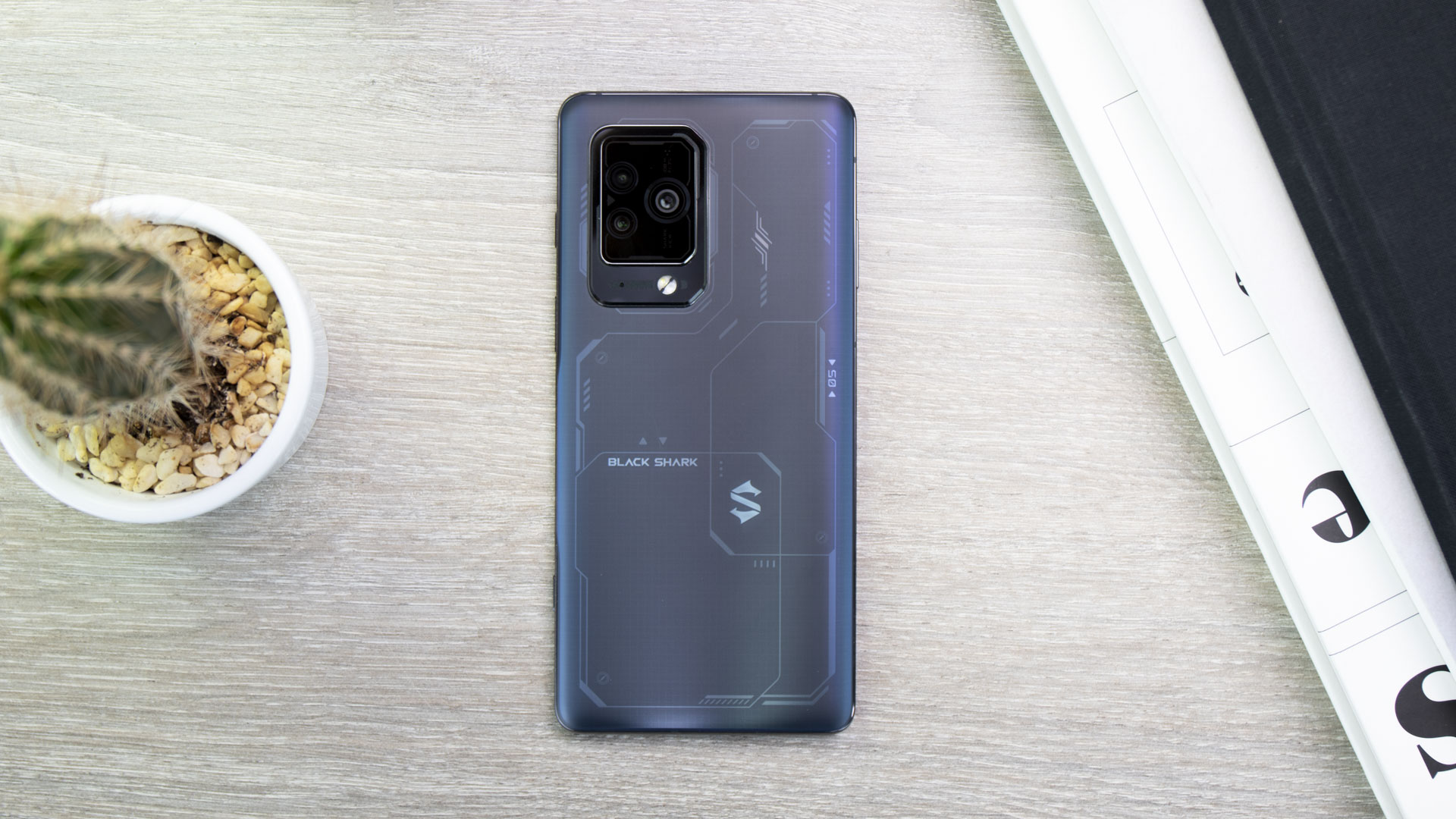
Pros
- Strong gaming performance
- Fast, responsive 144Hz display
- Built-in magnetic triggers
- Great main camera
Cons
- Fixed focus on ultrawide camera
- Can get hot over prolonged sessions
- JoyUI takes some getting used to
The Black Shark 5 Pro was released back in 2022, but the Xiaomi-owned brand is yet to release a follow up. While it’s not the best option these days, mobile gamers shouldn’t rule it out.
This is a phone that still ticks most of the boxes for gamers: it has a buttery smooth 144Hz refresh rate, top-level performance and gaming-specific features such as magnetic triggers and gesture-activated shortcuts.
The 120W charging, while unchanged, provides some of the snappiest charging times around, achieving a full 100% charge in under 30 minutes. However, the downside is a smaller battery than some rivals.
Unlike the touch-based triggers of some rivals, the Black Shark 5 Pro has magnetic triggers that pop up from the body of the phone for a more traditional controller experience, making for a great portable gaming experience without the need to carry additional accessories.
Though not usually a focus for gaming phones, the Black Shark 5 Pro has an impressive 108Mp rear-facing camera that’s capable of taking decent snaps, though the decision to include autofocus capabilities to the macro lens and not the more popular 120-degree ultra-wide is an odd decision that leaves some ultrawide shots looking a little soft.
The Black Shark 5 Pro is getting a little dated, but if you can find it available with a discount, you won’t be disappointed.
Buying advice for gaming phones
What is a gaming phone?
Put simply, a gaming phone is a phone designed for gaming.
That usually means a focus on performance, with a powerful chipset and lots of RAM to ensure it can play the latest mobile games smoothly. Most gaming phones also have big, responsive displays and powerful speakers – or even a headphone jack.
Some go further than that though, with distinctive designs built for gaming. That can mean extra cooling and larger batteries to ensure performance in long gaming sessions, built-in buttons and triggers to supplement touch controls, and in some cases even tricks like side-mounting the selfie camera and charging port to better suit using the phone in landscape.
The main downsides are that gaming phones tend to be bigger, bulkier, and heavier than most other options. They also usually have distinct ‘gamer’ designs, often including RGB lighting or extra displays, which may not be to your taste.
Can I use a ‘normal’ phone for gaming?
Absolutely. Dedicated gaming phones have their place, but the actual performance gap between a gaming phone and a top ‘regular’ flagship is pretty small.
Gaming phones use the same chipsets as other high-end devices, they simply bolster them with improved cooling, bigger batteries, and usually more RAM. That can give a slight edge while gaming, but in practice any high-end iPhone or Android device will keep up.
So if you don’t like the look of most gaming smartphones, or can’t imagine giving up your Pixel camera just for CoD, you don’t have to.
Can’t I just stream games over the cloud?
Cloud gaming is better than ever, but it’s not there yet. While numerous cloud game streaming services are available, they’re really only suited to single-player gaming – and even then, only while you’re on Wi-Fi or reliable 5G.
Since many mobile gamers prefer to play competitive online titles, cloud gaming isn’t really an option, as it introduces too much lag. The cloud also won’t work for you if you don’t have reliable access to fast internet.
That’s why, for now at least, there’s still a space for dedicated gaming hardware that offers the power necessary to max out your performance.
What specs do I need for gaming?
There are a few key specs to look out for in a modern gaming phone.
The main one is the core chipset. Look for a Qualcomm Snapdragon chip that begins in ‘8’ – the latest is the 8 Gen 3, but the previous 8 Gen 2 will still do great too – or a similarly powerful MediaTek Dimensity chip such as the latest 9300.
You’ll also want at least 8GB of RAM to make the most of the chip. More is better, but there are diminishing returns beyond 12GB or so.
The display matters too. You’ll probably want a fairly large screen to game on – at least 6.5-inches – and look for one with a 120Hz refresh rate or higher, and the fastest touch response rate you can find. Spending more for AMOLED tech over LCD will deliver better contrast and colours, but don’t worry too much about resolution – gaming phones rarely go beyond Full HD.
Which gaming phone accessories should I buy?
One extra perk of buying a gaming phone is that they usually offer a range of accessories to go with them. These vary by manufacturer, so there’s no hard-and-fast rule on what to pick up.
Strap-on coolers and fans are a good way to maintain performance and reduce long-term damage to the phone’s chip from overheating. If you find it fiddly to play on the touchscreen, you might also want to grab a Bluetooth controller. As with any phone, a protective case and screen protector are always a good bet too.


